Checkmate Stress: How Nutrition, Exercise, and Heart Rate Variability Can Help You Win more at Chess!
As part of my research for my talk at the Global Chess Festival in 2021, I measured my heart rate and calorie burn across various activities – as you see in the below graph, competitive chess was right up there alongside high intensity interval training (walk/run on a treadmill). As Robert Sapolsky mentioned back in 2009, chess players can burn up to 6000 calories per day! The Netflix documentary called Chess Explained goes on to add that during a tournament a chess players blood pressure can be as high as a marathon runner, and they can burn up to 6000 calories a day, more than a World Class Tennis Player!
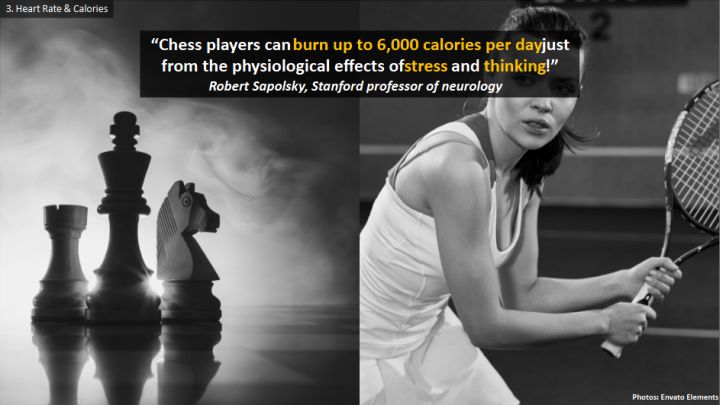
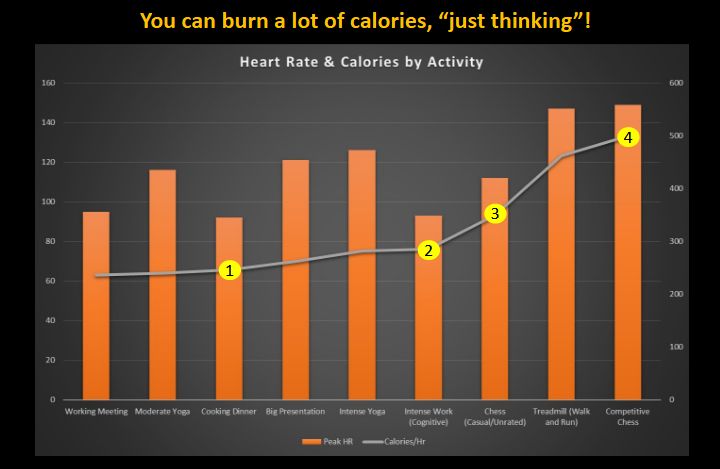
This is because the brain while being just 2% of the body’s weight, accounts for 20% of the energy use – and up to 50% in case of a six-year-old! Hence, it’s very critical to “eat right” to ensure stable energy levels during a game!
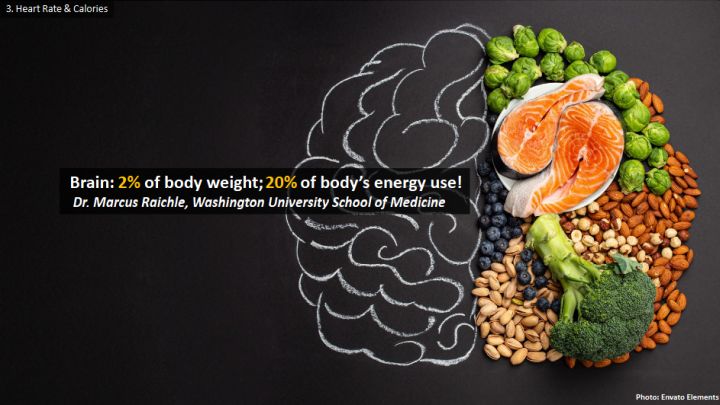
I read that Magnus, for example, switched from orange juice to drinking a combination of chocolate and regular milk to ensure sustained energy levels during long games!
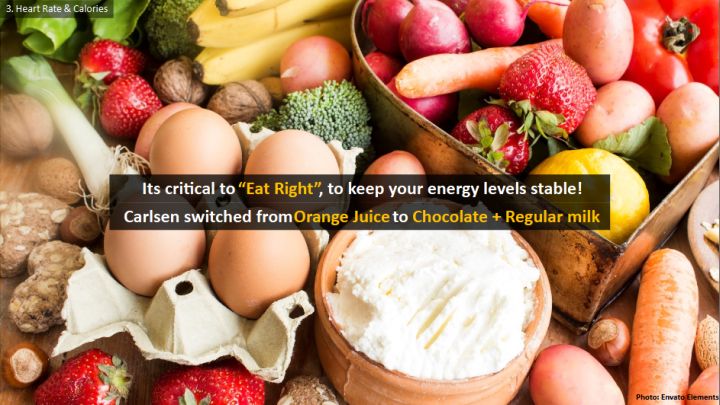
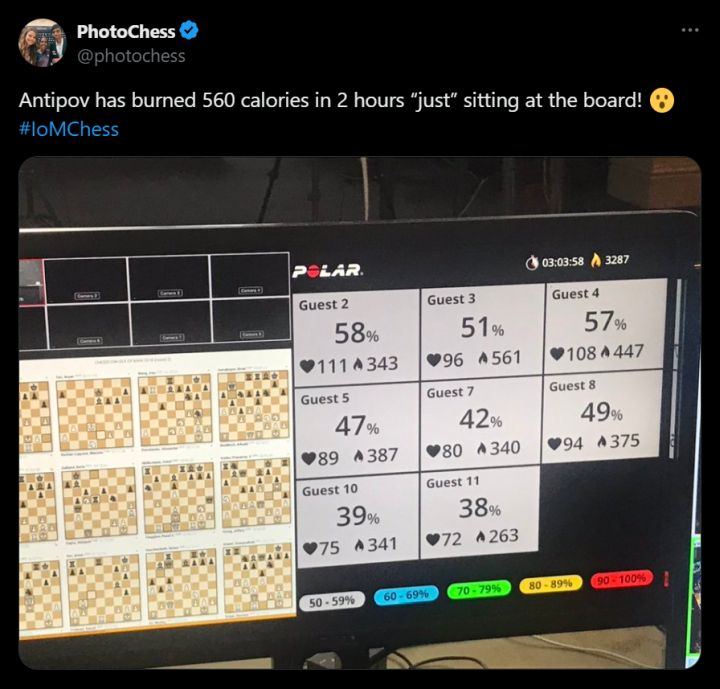
Competition induces a significant amount of pressure to win causing fear, anxiety and stress, temporarily causing heart rate to increase to deal with the situation (“fight/flight”)! To keep our nervous system balanced, we must learn to build resistance to stress and also recover from it! Mental boot camps, where we practice stressful situations via simulation with controlled doses of stress, can help build resistance to stress and increases tolerance to anxiety. Fitness training, physical and mental, are critical as well. Physical fitness enables a stronger heart that is more resilient to very high heart rates!
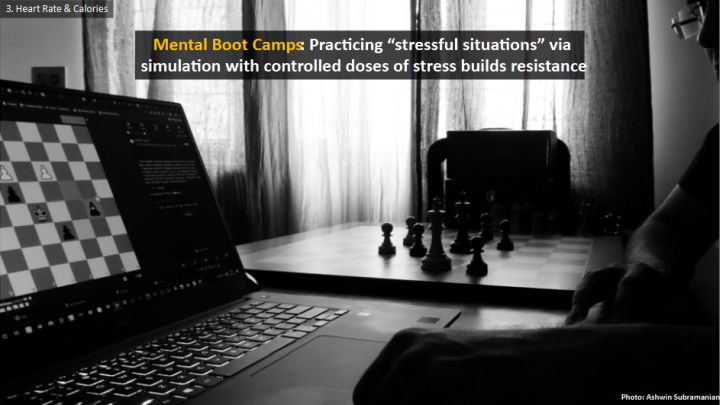
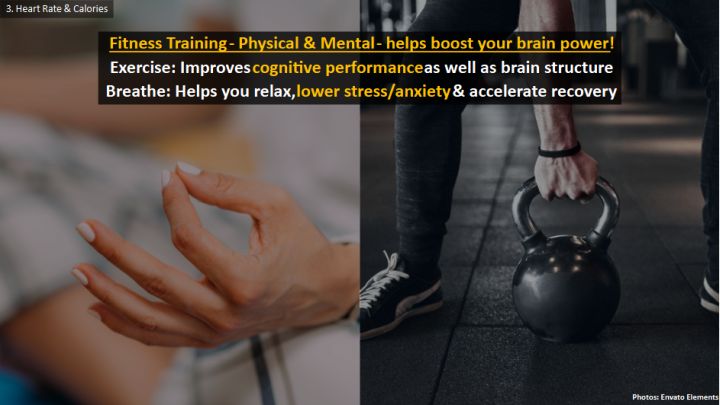
Breathing helps you relax, lowering stress/anxiety and accelerating recovery, helping balance our nervous system! Vidit, for example, always takes a few moments to breathe before he starts his game – to balance his nervous system by optimizing his heart-brain connection and hence ability to recovery from stressors during the game, switching quickly between alert and calm mental states!
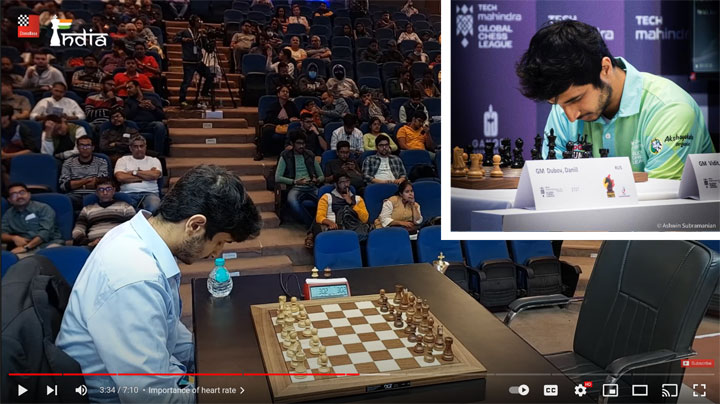
Let’s now discuss a very important concept and tool – Heart Rate Variability. HRV is essentially the time interval between two successive heart beats. And as you can see below, it varies with each Heartbeat, hence called Heart Rate Variability.

“Rhythm of a healthy heart, even under resting conditions, is actually surprisingly irregular, with the time interval between consecutive heartbeats constantly changing! This naturally occurring beat-to-beat variation in heart rate is called Heart Rate Variability (HRV)” – HeartMath.

And HRV reflects our ability to recover from stress – higher the better. It is trainable and a lot of professional athletes are using HRV biofeedback to optimize their training and performance! It is important to understand that the Heart Brain connection is bi-directional – heart signals impact our brain functions like focus, problem-solving and decision making – critical for chess. And positive emotions ensure orderly signals from the heart to brain that enable cognitive functions - critical for high performance!
Essentially HRV is due to the synergistic action of two branches of our nervous system – and much like the accelerator and brake of a car, HRV waveform has a strong connection to our performance and a rhythmic waveform generated by sustained positive emotions lead to optimized performance of our brain and body! HRV Training is essentially resonance breathing (4s inhale, 6s exhale) combined with visualization (positive emotions). Regular training enables quick recovery from a moment of stress as simply breathing the same way would balance your nervous system and help you recover from your stressor, allowing logic to prevail! So, the next time you make a mistake, blunder or even just worried about your position, simply breathe!
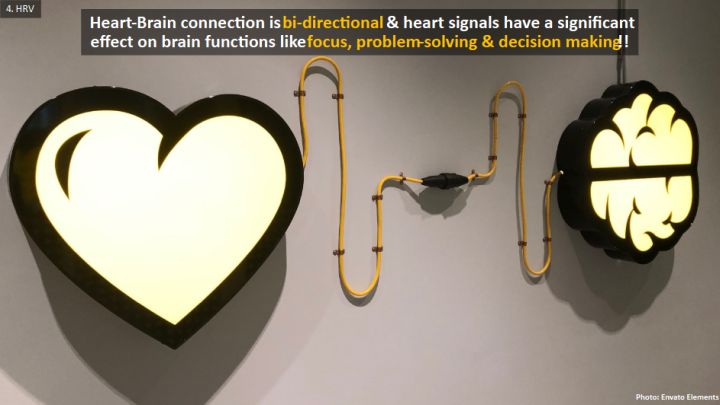
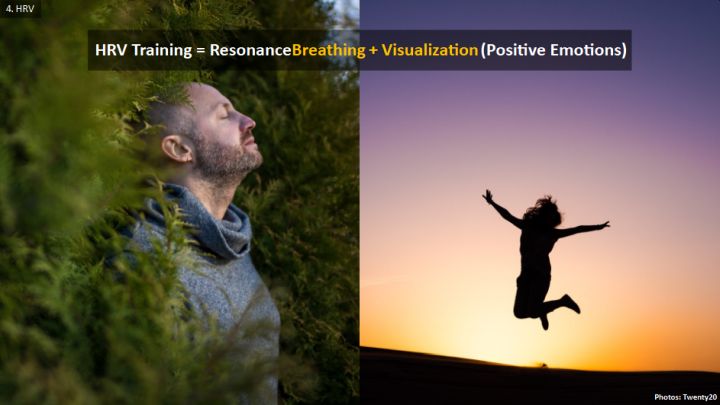
I practiced HRV training (using resonance breathing with 4s inhale + 6s exhale and positive emotion visualization) for a month while playing chess. The result? My HRV improved, and my chess skills got better too! Specifically, I improved at converting advantages, handling endgames, and managing time more effectively, according to AimChess analytics!
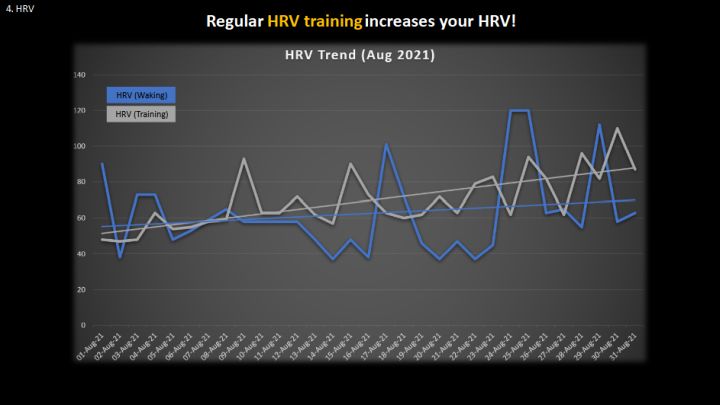
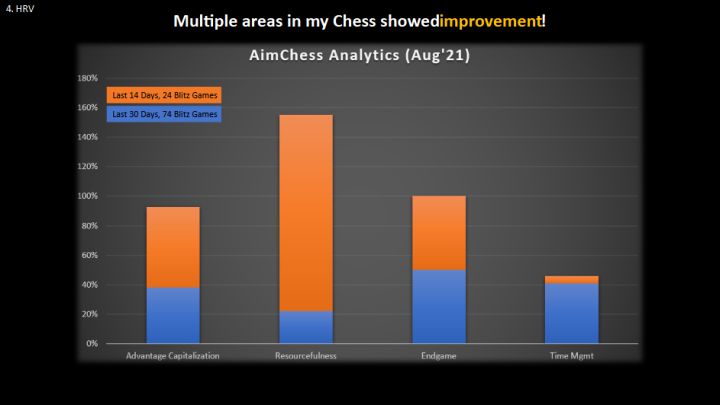
Coming soon: Closing Thoughts and Advice
Also read
.jpeg)




































